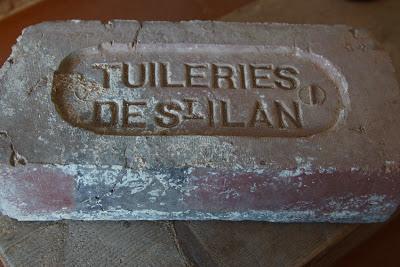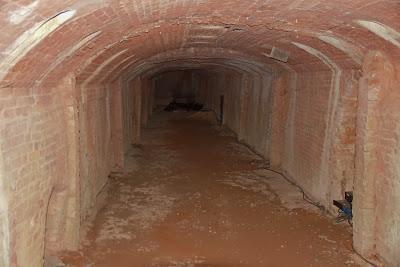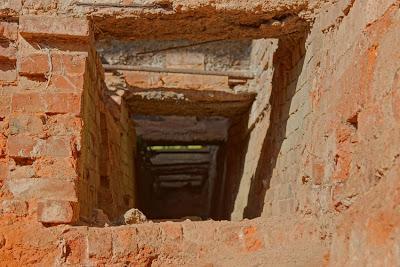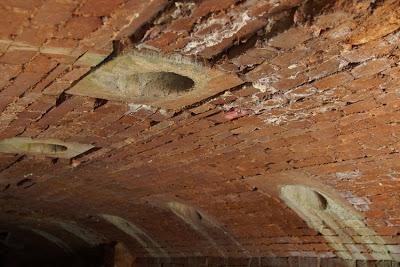 When the Saint Ilan brick and tileworks were built in 1864, they used cutting-edge technology. Their location on the bay of Saint Brieuc also provided high-quality clay. As a result, the products became well-known throughout Brittany and beyond.
When the Saint Ilan brick and tileworks were built in 1864, they used cutting-edge technology. Their location on the bay of Saint Brieuc also provided high-quality clay. As a result, the products became well-known throughout Brittany and beyond. That state-of-the-art technology, a Hoffmann kiln, still survives today and forms the centrepiece of a museum, La Briqueterie. Although Saint Ilan was early to adopt the new process, invented in 1858, it spread throughout the world and transformed brickmaking into a far more efficient process.

Hoffmann kiln interior
In the center of the kiln was a long, narrow tunnel which acted as a flue. Running around it, a long but wider tunnel was divisible into separate sections; bricks would be loaded into one of these sections and its entrance closed up. As the fire moved towards it, the gases would progress from being warm enough to help dry the clay, to hot enough to heat the bricks, and finally of a high enough temperature for the firing itself. Coal was added through holes in the roof; dampers and flues helped to control the flow of the hot gases. As the fire moved on (by about five metres a day), the bricks would gradually cool and could be removed and replaced by a new batch.

Hoffmann kiln flue
This process was a great advance because it allowed the firing process to be continuous. Without having to load, heat, fire and cool one batch at a time, the number of bricks a single kiln could produce increased dramatically, and the fuel was used much more efficiently: Saint Ilan could fire 15,000 bricks a day using half the energy of a traditional kiln. The results were also more consistent, and with experienced operators the wastage rates were lower. Today, Hoffmann kilns have been largely replaced by tunnel kilns which move the bricks rather than the fire; but they remain in use in some developing countries.

Kiln interior - roof detail
In its new life as a museum, the brickworks at Saint Ilan also explores other local occupations including salt-making, shellfish-gathering and market-gardening, as well as Harel de la Noë's masterpiece, the Cotes du Nord railway.
Further reading;Low-Tech Magazine has a fuller description of the Hoffmann firing process. A Rotherhithe Blog, in exploring the history of London stock brick, discusses earlier firing methods.

